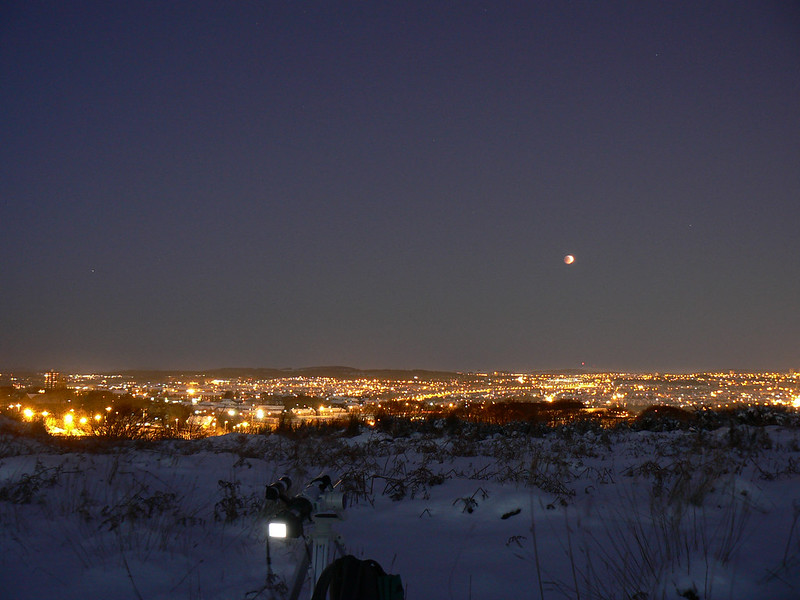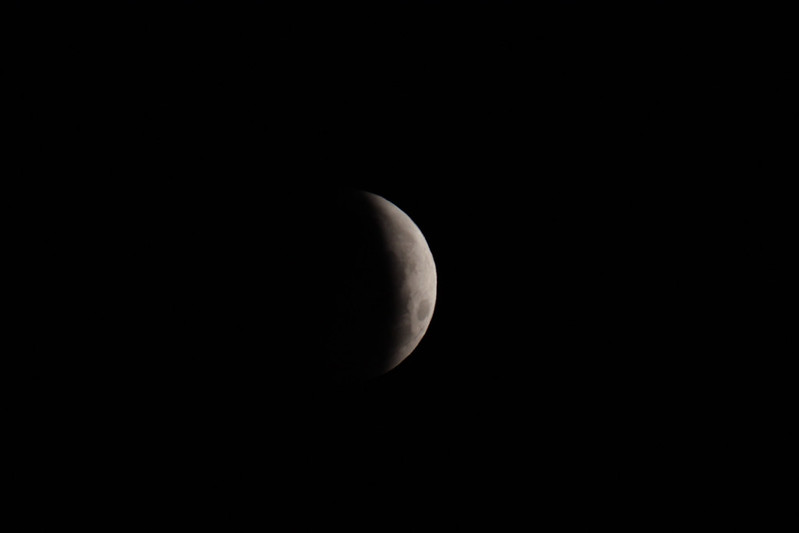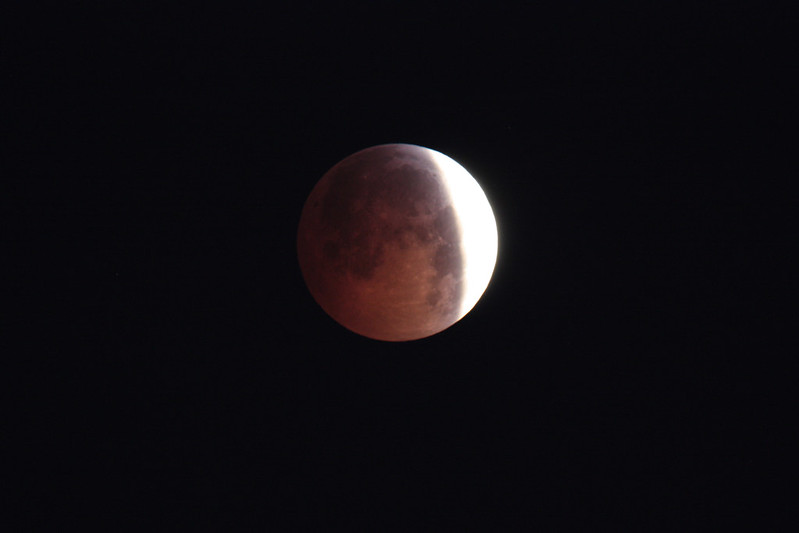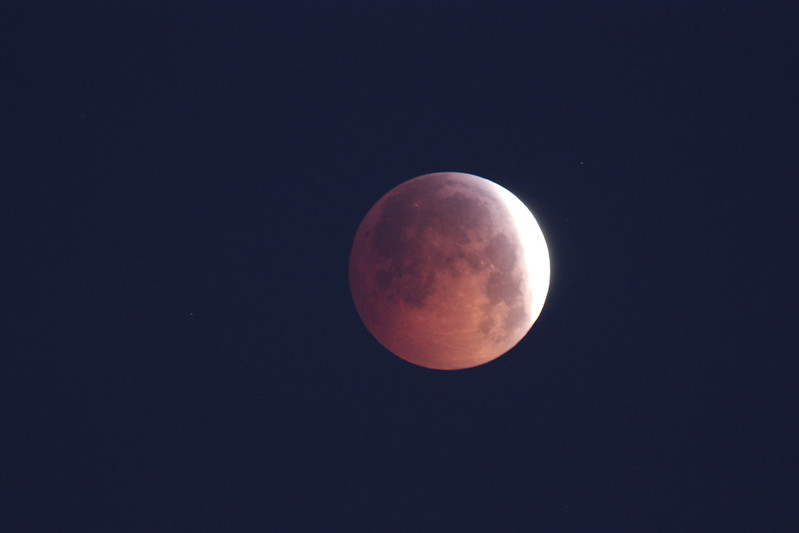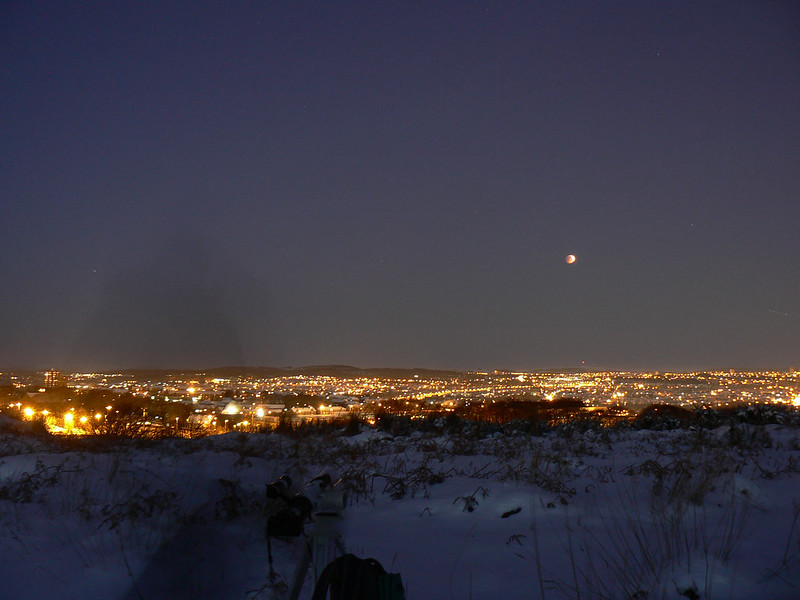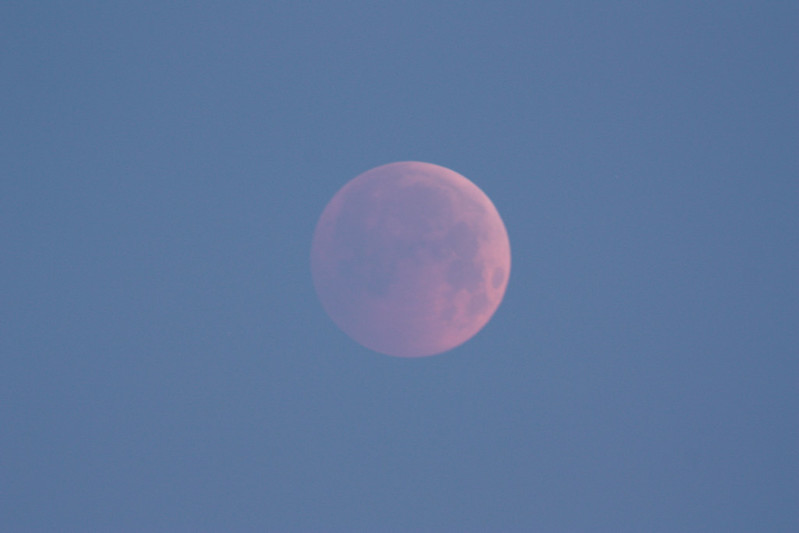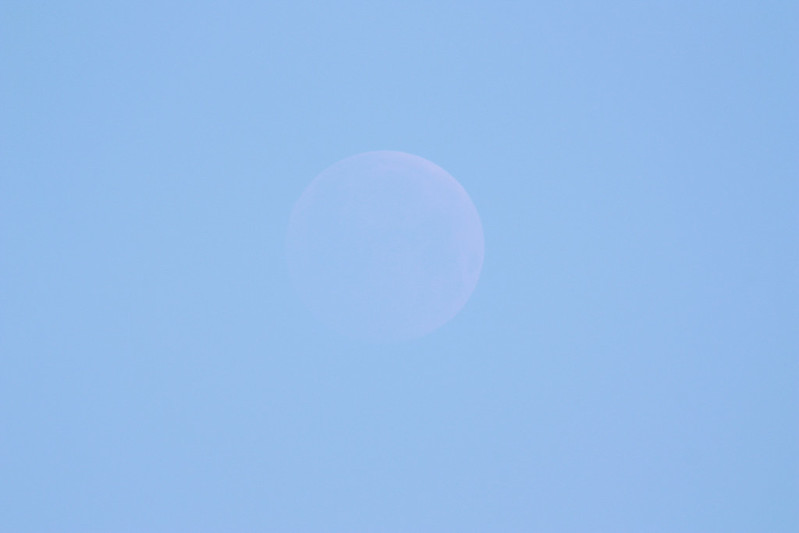Winter Solstice Total Lunar Eclipse
This morning's Total Lunar Eclipse was a slightly unusual one, in that if viewed from the UK, the Moon would set whilst eclipsed. In addition this was the first eclipse to occur on the day of the winter solstice since 1638.
It was icily cold at 6:50am when I left the flat to walk up to the summit of Cat Cairn, which is a small lump that sits above Tullos to the south of the city of Aberdeen. It would give me a reasonably clear horizon to the west and allow me later on to watch the sun rise on the shortest day of the year.
The Moon was already eclipsed, U1 occurring at 06:32am, as I walked up the hill with my telescope and photographic equipment.
In the sub-zero temperatures it was a race against time to get my equipment set-up before I lost all feeling in my gloveless fingers (note to self: buy new pair of thin gloves for 2011!). I soon had the 80mm refractor up and the Canon 450D hooked up to it via a t-adaptor. Then I set-up my Panasonic DMC-FZ7 to get a few widefield shots of the event (attaching the Gorillapod to a handy fencepost behind me).
It was clear as I arrived it was going to be perfect conditions for viewing the eclipse which was already well underway. One of the first photos I took is shown below and it is clear that the Earth's shadow has already covered a large part of the Moon's disc. This, as with all the lunar photos that follows, was taken with my 450D at prime focus on the 80mm telescope.
Moon at 7.17am GMT, Canon 450D, Vixen ED80sf Refractor, 1/50s, ISO 200
Now it was really just a matter of enjoying this beautiful and stately event. The sky was clear overhead and Spica and Venus both shone brilliantly in the south. Over the sea and around the horizon line there was a faint, clinging mist which would eventually swallow the Moon as it set.
Moon at 7.20am GMT, Canon 450D, Vixen ED80sf Refractor, 0.5s, ISO 800
Luckily though, as totality approached, the Moon was sufficiently high to enjoy excellent views whilst the colour deepened dramatically, the Moon darkening and turning increasingly russet red.
Moon at 7.26am GMT, Canon 450D, Vixen ED80sf Refractor, 1.3s, ISO 800
I continued to take photos and watch the Moon over the next few minutes, balancing the exposure to catch the Moon against a sky that was very slowly beginning to lighten from the east.
Moon at 7.34am GMT, Canon 450D, Vixen ED80sf Refractor, 1.3s, ISO 800
At 07:40 the Moon was completely within the umbral shadow and so totality had begun. At the same time the dawn sky was brightening with the slow approach of the sun and so the Moon was fading, particularly as it was gradually swallowed by the haze on the horizon. The next shot was a long exposure photo taken with myself appearing as a ghostly figure to the left - I stepped into frame to take a couple of shots via my telescope.
Almost at totality - the scene over Aberdeen at 7:39am
After this the sky brightened rapidly, though it was just possible to track the sinking Moon. Totality rapidly dimmed the brightness and soon it was just the outline of the sphere that could be seen against the increasingly blue sky.
Moon at 7.46am GMT, Canon 450D, Vixen ED80sf Refractor, 2.5s, ISO 400
Below is one of the final pictures I took through the telescope before the Moon was completely lost to sight.
Moon at 7.59am GMT, Canon 450D, Vixen ED80sf Refractor, 2.5s, ISO 400
After the Moon had faded from sight I dismantled the telescope and then headed up with my camera to the top of the nearby cairn to watch the sunrise out of the North Sea.
The Eastern Horizon at 7:56am, Panasonic DMC-FZ7, 28mm, f/5.6, 0.2s, ISO 400
It was then a wait of almost an hour before the sun finally rose above the industrial units on the Altens estate. During this time an Aberdeen Astronomical Society member, who had been watching the eclipse from near Nigg Kirk, joined me on the cairn.
The light display, as the sun neared, and the horizon was washed over with successive colours of purples, blues, oranges, yellows and reds, was stunning. Then the globe of the sun suddenly appeared in a flash of light, and the shortest day had begun.
Sunrise at 8:39am GMT, Canon 450D, 35mm, f/5.7, 1/1250, ISO 400
Following the above events my photos were featured on the local news page of the STV website and on Universe Today at this link.
See also my images from the 2007 Total Lunar Eclipse here.
